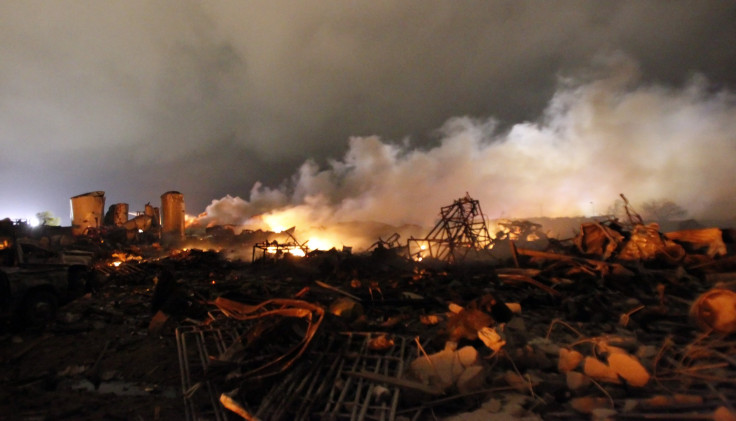West Texas Fertilizer Plant Issued Permits By State Agency Without Objections

The Texas fertilizer plant that caught fire and exploded Wednesday night had been granted two permits by a state agency after technical reviews found no problems. The plant was also subject to seven investigations by the Texas Commission on Environmental Quality.
The West Fertilizer Co. plant explosion killed something between five and 15 people -- the toll is still unclear hours later -- and injured more than 160 in a blast so powerful it registered as a small earthquake.
The facility in West, Texas, received two prior complaints – one for dust in 2002 and another for an ammonia odor in 2006, according to the TCEQ.
“Dust complaint investigation conducted September 18, 2002 to October 3, 2002 – no nuisance conditions noted,” the agency said in an email.
While investigating the odor complaint, the agency found that the fertilizer plant never filed for a permit for two 12,000-gallon anhydrous ammonia tanks. The plant was built in 1962 and had been grandfathered into laws requiring permits, but lost its grandfather status at the time of the complaint, according to the TCEQ.
That led to a notice of violation in June 2006 for “operating without authorization,” the agency said. The issue was resolved after the plant filed a permit application in December 2006.
The agency initiated five other investigations into the plant, including site and file reviews related to a second permit “for the material loading and storage operations of dry fertilizer materials.”
The TCEQ said it “has not received any complaints regarding this facility” since the dust and odor complaints.
While the state agency didn’t fine the plant for not filing the anhydrous ammonia tanks permit, the facility was fined $2,300 in 2006 by the U.S. Environmental Protection Agency for failing to come up with a risk-management plan.
Since the explosion Wednesday night, the TCEQ said “environmental assessments are under way.
“We are working under the incident command and are the lead for coordinating state assets to conduct air monitoring, plume modeling and assessing all environmental concerns,” the agency said.
© Copyright IBTimes 2025. All rights reserved.






















